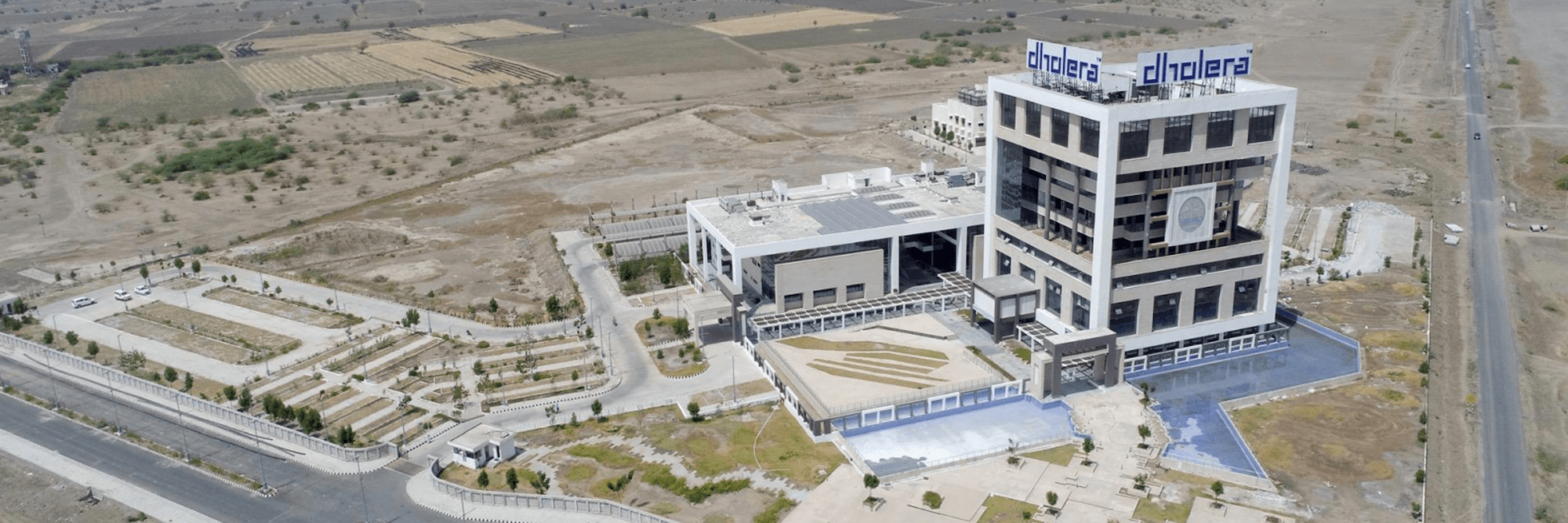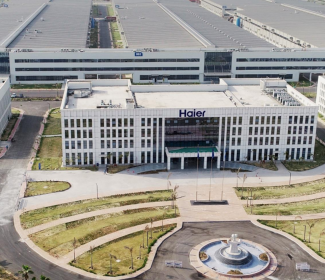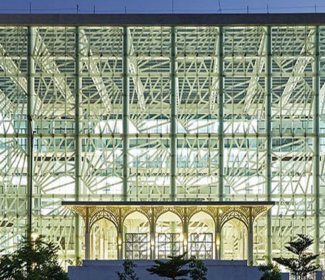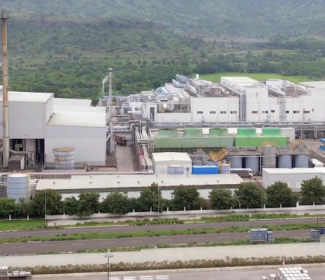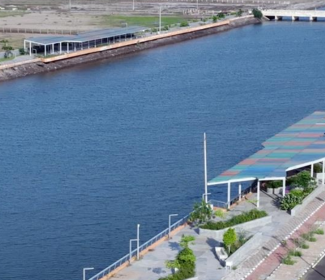“The Cabinet has taken a very important decision of building 12 Industrial nodes/cities under National Industrial Corridor Development Programme. Apart from the significant infrastructure boost, it will enhance growth and create employment for many people,” Prime Minister Narendra Modi tweeted on August 28, 2024.
Aiming to create employment, easing connectivity, economic development through sustainable growth and a smart and efficient series of collaborations with foreign investors, the Union Cabinet decision focuses on a wider horizon of opportunities.
Before diving into details of India’s plans for Industrial Corridors, let’s first clarify the concept, their significance in the development of the country, their impact on the people and nationwide growth.
What are industrial corridors?
Industrial corridors are defined as linear zones that link key economic hubs through a comprehensive network of infrastructure and connectivity like roads, railways, ports and airports. Drawing inspiration from successful international models, India’s ambitious National Industrial Corridor Development Programme (NICDP) aims at transforming the country’s industrial landscape.
A key strategy for economic development ─ combining industrial growth with infrastructure development ─ the mission aims to support growth of industries and create a strong economic base in a globally competitive environment, attracting both domestic and international investments, and fostering sustainable development.
The primary objective is to create a conducive environment for industries to thrive by providing essential services, reducing logistical costs. These corridors typically involve the development of smart cities ─ or industrial clusters ─ equipped with modern facilities and utilities and aimed at enhancing productivity and competitiveness.
Key features of industrial corridors
- Integrated infrastructure: Industrial corridors feature robust infrastructure that includes multimodal transport systems, utilities and Information and Communication Technology-enabled (ICT-enabled) services. This infrastructure is designed to support the operational needs of industries and facilitate seamless movement of goods.
- Plug-and-play facilities: Many successful corridors offer ready-to-use facilities that allow businesses to start operations with minimal set-up time. This includes prebuilt industrial plots, access to utilities and streamlined regulatory processes.
- Sustainability initiatives: Modern industrial corridors incorporate sustainable practices such as waste recycling, renewable energy utilization and green building standards to minimize environmental impact.
- Skill development and employment generation: These corridors often focus on creating a skilled workforce through training programs and partnerships with educational institutions, thereby enhancing local employment opportunities.
- Special Economic Zones: Industrial corridors often include special economic zones that provide tax incentives and regulatory advantages to attract foreign investment and promote exports.
- Public-Private Partnerships: Successful industrial corridors are often developed through collaborations between government bodies and private enterprises, ensuring efficient resource allocation and management.
- Walk-to-work culture: It reduces traffic and pollution, promotes healthier lifestyles and boosts productivity by minimizing commuting time. Supported by pedestrian-friendly infrastructure, green spaces and efficient public transport, it enhances work-life balance and creates appealing, investment-friendly smart cities.
Envisaged on the backbone of Western Dedicated Freight Corridor (WDFC) by the Indian Railways, the concept in India was first introduced with the Delhi-Mumbai Industrial Corridor (DMIC), which was approved by the Union Cabinet in 2007.
This project set the stage for the establishment of several other corridors, such as the Amritsar-Kolkata Industrial Corridor (AKIC), Chennai-Bengaluru Industrial Corridor (CBIC) and East Coast Industrial Corridor (ECIC), among others. Each of these corridors has been designed to create greenfield industrial cities with world-class infrastructure and a strong focus on manufacturing.
International best practices
India’s approach to industrial corridors is heavily influenced by successful models from around the world. Several countries have developed industrial corridors that have become benchmarks for industrial and economic growth.
- Japan’s Tokyo-Osaka Corridor: The Tokyo-Osaka corridor is a prime example of an integrated industrial region that has successfully leveraged its geographical advantages. This corridor supports a dense network of industries and logistics services, facilitated by advanced transportation systems like the Shinkansen (bullet train) and extensive highway networks. Japan has now announced plans to construct a network of hi-tech, automated conveyor belts of more than 500 km between Tokyo and Osaka called the “Autoflow Road” transport system which could carry the same amount of freight as 25,000 truck drivers every day to transport goods. The emphasis on innovation and technology has made this corridor a global manufacturing hub, attracting multinational corporations.
- South Korea’s Songdo International Business District: Located in Incheon, Songdo is a planned city that serves as a model for greenfield smart cities. It is being constructed on 1,500 acres of landfill in South Korea along Incheon waterfront. The master plan includes 600 acres of open space to encourage gatherings and interaction among the people. A “Central Park” is located at the heart of the city with a Venice style canal system located inside it. It is part of the Incheon Free Economic Zone and is designed to attract international businesses with its state-of-the-art infrastructure, including smart grids, eco-friendly buildings and advanced logistics systems. Songdo’s success lies in its focus on sustainability and technology, making it the first sustainable city in the world and first LEED-certified city in Korea.
- China’s Suzhou Industrial Park: This industrial park, developed in collaboration with Singapore, is one of China’s most successful industrial zones. Located near Shanghai, Suzhou Industrial Park features a well-planned infrastructure with a focus on high-tech industries, including electronics and biotechnology. The park has attracted over 1,800 foreign enterprises and become a model for other industrial parks in China, showcasing the importance of international cooperation in developing industrial corridors.
- Vietnam’s Saigon Hi-Tech Park (SHTP): Vietnam has emerged as a significant player in the global manufacturing landscape, and the Saigon Hi-Tech Park is a testament to its success. Located in Ho Chi Minh City, the park is home to several global tech giants, including Intel and Samsung. SHTP has received exceptional supports and incentives from both the central and local governments, as well as from other relevant state agencies. The park’s success is attributed to its focus on hi-tech industries, a skilled workforce and government incentives such as corporate income tax of 0% for the first four years, VAT and export duty exemption among other exemptions for foreign investors.
- Singapore’s Jurong Industrial Estate: Located in the west of Singapore, on drained swampland near the mouth of the Jurong River, is one of the country’s first industrial zones, set up in the late 1950s. Today, Jurong has evolved into a comprehensive industrial hub with a wide range of industries, from petrochemicals to electronics. The estate’s success is due to its strategic location, efficient infrastructure and business-friendly policies.
- Indonesia’s Karawang Industrial City: Located near Jakarta, Karawang is a key industrial hub in Indonesia, particularly for the automotive, electronics and food processing industry due to its access to key transportation routes. The city emphasizes sustainability, with initiatives focused on waste management and renewable energy. It also boasts of a power plant, which provides electricity to the tenants of this industrial park city. Karawang’s success is built on its strategic location and the government’s efforts to create a conducive environment for business growth as well as providing various social and environmental benefits to the surrounding communities.
India’s roadmap ahead
India’s NICDP represents a pivotal strategy for transforming the country’s economic landscape. It aims to replicate the success of these international models by creating industrial corridors that are “ahead of demand.” This means developing infrastructure and industrial zones before the need arises, thereby attracting investments and driving economic growth.
“NICDP is a forward-looking initiative that strategically positions India to attract substantial investments. These smart industrial cities will be functional in creating an India that's ready for the future. The goal is to create a strong economic base with state-of-the-art infrastructure, activating local commerce and enhancing investment,” says Ananthanarayanan Shanmugam, Senior Vice President and Chief Facilitation and Government Relations Officer (State Facilitation) at Invest India.
As India continues to invest in its industrial corridors, the focus will remain on building integrated, resilient and sustainable industrial ecosystems that can adapt to future challenges. These corridors will not only enhance connectivity between key economic hubs, but also facilitate the development of smart cities equipped with modern utilities and services. Through strategic planning and investment, these industrial corridors can become powerful engines of economic growth, creating jobs, enhancing competitiveness and improving the quality of life of surrounding communities.
- https://x.com/narendramodi/status/1828779772056318305
- https://japannews.yomiuri.co.jp/business/economy/20240623-193996/
- http://www.songdonsic.com/en/ibd_en/business/?ckattempt=1
- https://www.suzhou.gov.cn/
- http://itpc.hochiminhcity.gov.vn/web/en/-/saigon-hi-tech-park-shtp-?inheritRedirect=true
- https://www.roots.gov.sg/stories-landing/stories/jurong-industrial-estate/story
- https://kiic.co.id/

